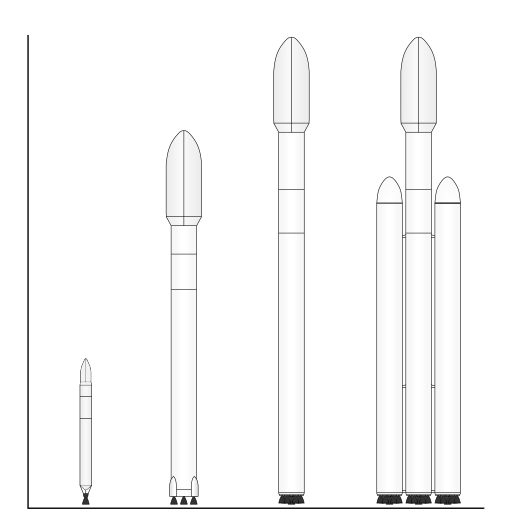ISS partners keep a flow of small pressurized cargo craft coming to the station for just 6 crew and experiments.
Progress,
ATV,
HTV,
Dragon, and soon
Cynus make up such a fleet. The ATV is the biggest carrying a max of 16,900 lbs or 7,667 kg. On land, we stack huge metal boxes carrying all kinds of cargo on ships, trains, and trucks. These are shipped around the land supplying communities with effectively whatever they need. Commonly these are 40ft long
cargo containers and can carry a max of 68,008 lbs or 30,848 kg.
Imagine if commercial space takes off, and many space stations orbit around Earth, the moon, and deep space are made and manned. Having around 24 people in each station who need food, clothes, equipment sent to them and waste taken from them. How would you supply that amount of cargo?
SpaceX's Falcon Heavy can lift to orbit almost the gross weight/mass of two 40 ft cargo boxes. So, I figure it could carry the cargo of one of these cargo boxes in a purpose made reusable stretch cargo capsule. It would be a vehicle of mass logistics transportation. What would such a craft look like and what would its operation be like?
 |
| Stretch Capsule concept made from Apollo CM pic |
Why stretch anything? The airline industry have stretched the bodies of its planes for many years to expand their payload capacity. I remember first learning about stretched aircraft with the
DC-9. It would seem reasonable to assume that commercial space companies sought out a solution for an increased capacity without reinventing the wheel all the way. SpaceX's Dragon is touted as a reusable capsule. They also want to make it to be capable of propulsive landings on the ground from orbit. Thinking about those capabilities, you could stretch the capsule lengthwise (see pic above) to increase cargo capacity per trip.
 |
| Falcon Heavy (right) with Falcon family |
A stretched capsule could launch from a heavy lifting rocket like the Falcon Heavy housed in a fairing. Upon arrival, it could dock or be captured and berthed to a station. The hatch on one end of the capsule would minimize space issues while attached to a station. I don't imagine that it would be used for crew but only for pressurized cargo. The station's Astronauts (Cosmonauts, or Taikonauts - if you like) would unload it and load it back up with whatever needs to be taken back down to Earth. That could include experiments and even waste. I've been considering the environmental impact of expending waste by burning it in the atmosphere. Dealing with the waste on the ground might be more beneficial. The capsule would detach from the station and de-orbit on its own merit. The long heat sheild and the integrity of the cross sectional shape of the capsule would allow for a similar atmospheric re-entry as the Dragon. Stretching the capsule longways also allows room for extra parachutes. Dragon stores its parachutes on the side of the craft in a compartment. The stretched capsule could have two or more compartments for parachutes. Then comes the propulsive landing which would have a number of thrusters along the sides of the craft. Several landing legs would also support this operation.
The stretch capsule could be an intriguing idea for future engineers and space operations. I think the alternative is to build newer and bigger capsules mostly from scratch. It's not just the capsule that has to be designed but the manufacturing process as well. I think a stretched solution would use the existing manufacturing process with some added parts. In the end, this is just one idea out of many.



No comments:
Post a Comment